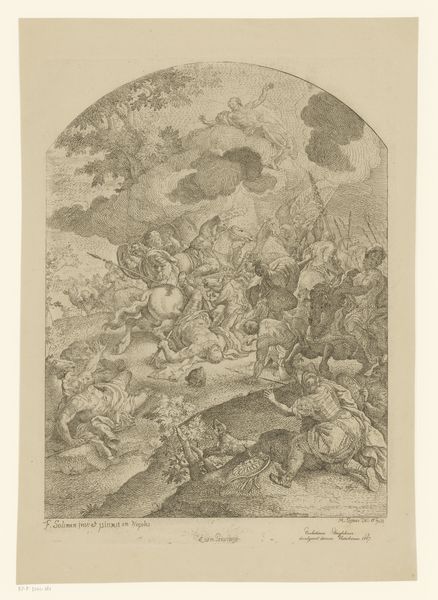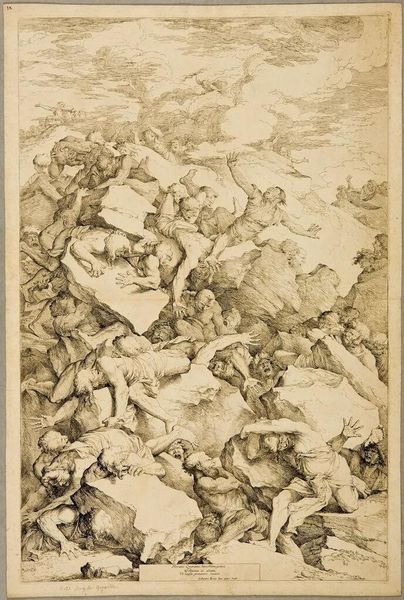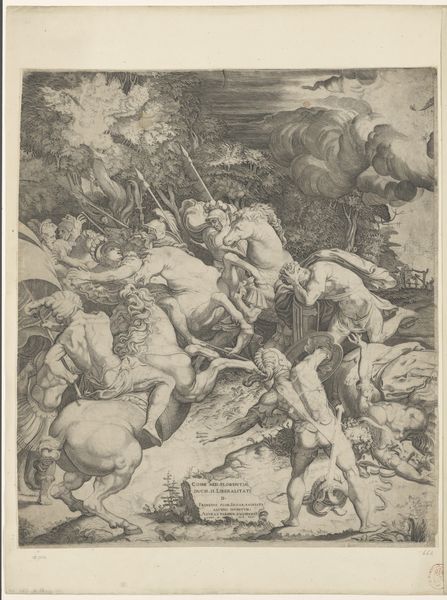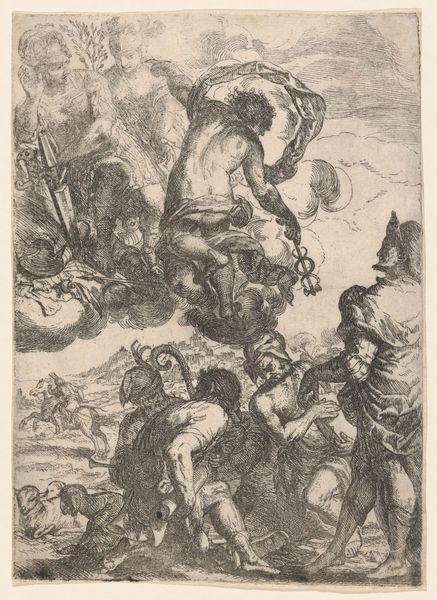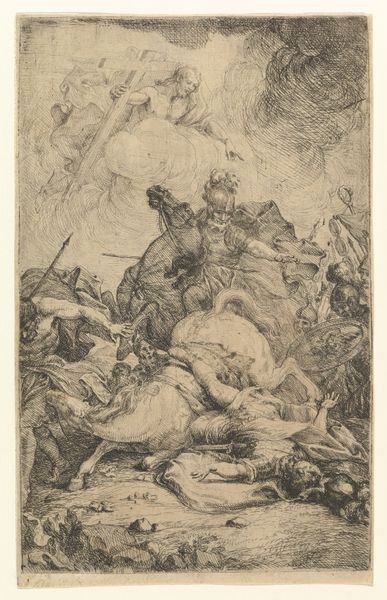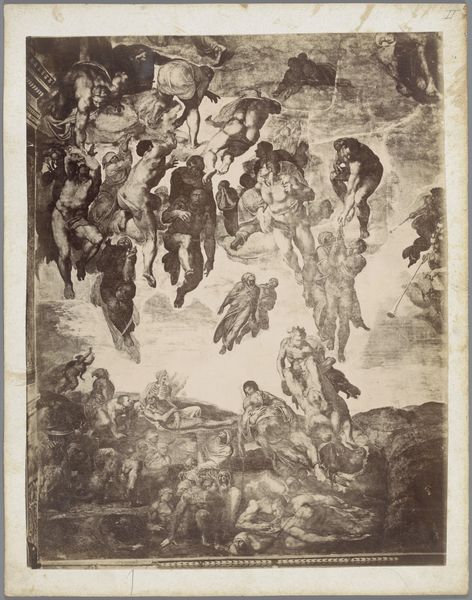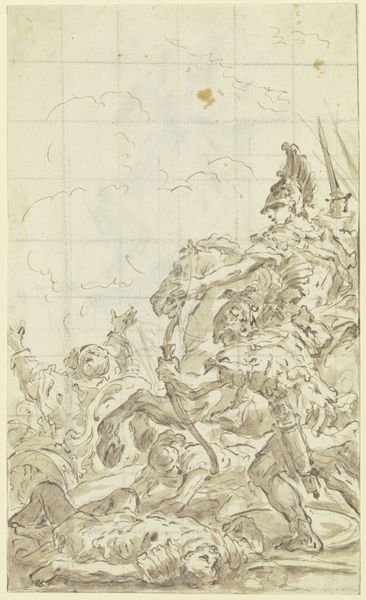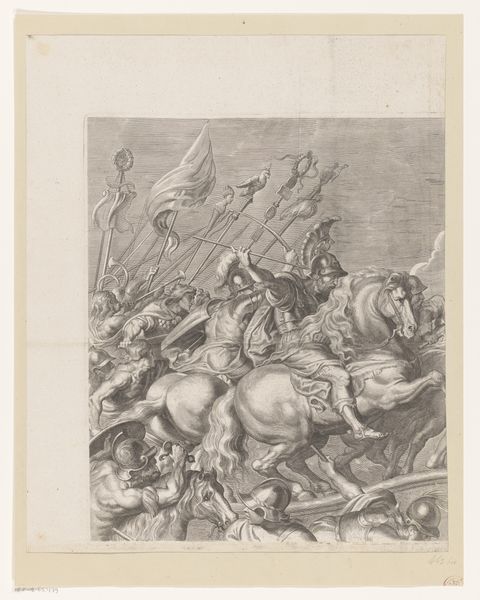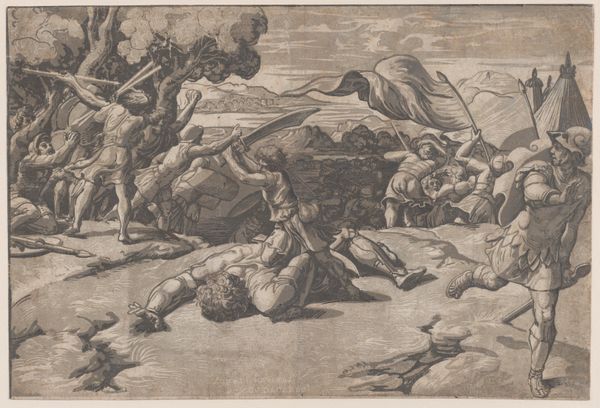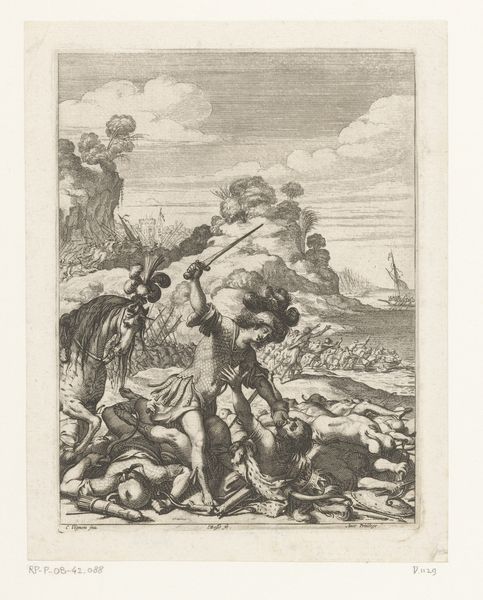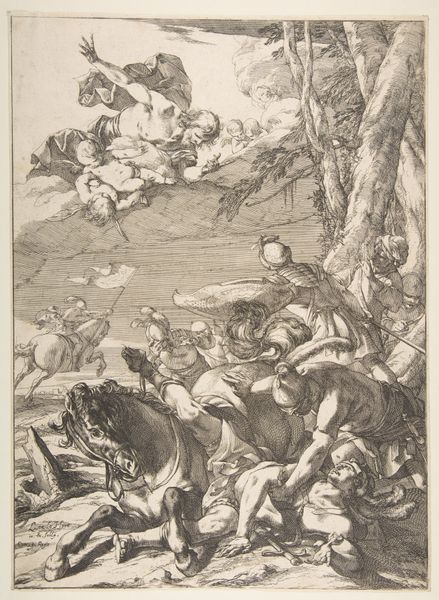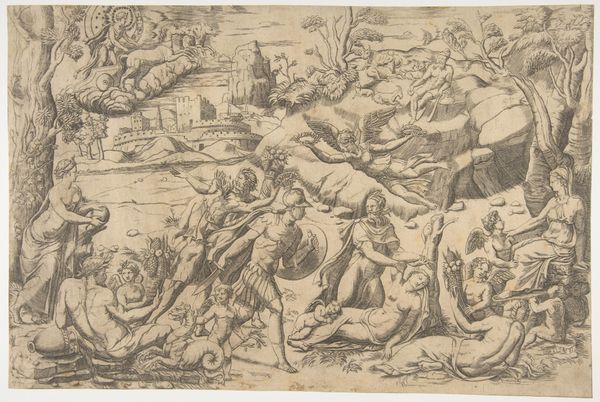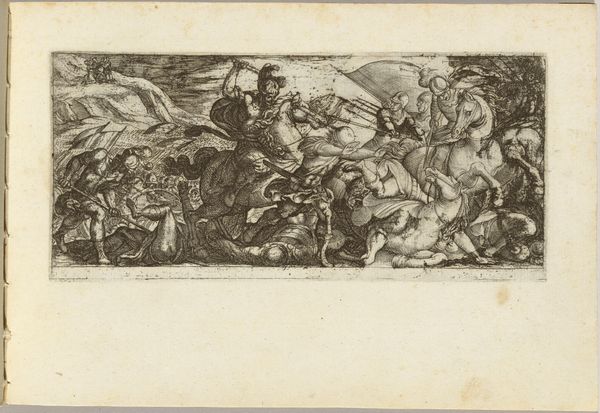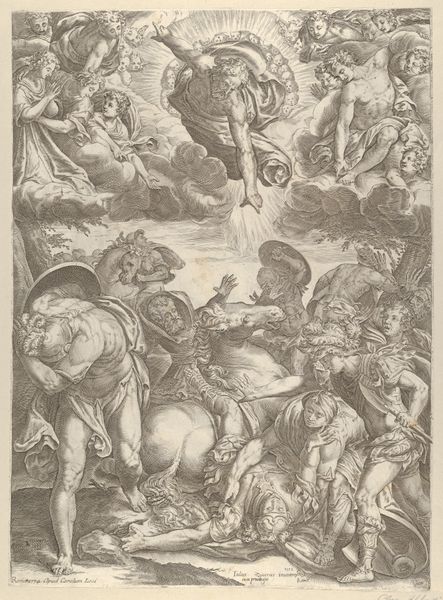
drawing, print, ink
#
drawing
#
baroque
#
ink painting
# print
#
pencil sketch
#
figuration
#
ink
#
history-painting
Dimensions: Plate: 28 3/8 × 18 9/16 in. (72 × 47.1 cm) Sheet: 29 15/16 × 20 3/8 in. (76 × 51.7 cm)
Copyright: Public Domain
Editor: Salvator Rosa’s 1663 ink drawing, "The Fall of the Giants," is intensely chaotic. All these figures tumbling over each other... what are your thoughts when you look at it? Curator: I see an intense exploration of process and materials. Look closely at the frantic, almost feverish use of ink. What kind of labor went into creating this? Not the mythical labor of giants, but the labor of Rosa himself? It suggests a kind of artistic frenzy, a very physical engagement with the materials. Editor: So, less about the story, more about how it was made? Curator: Precisely. The very *act* of creating this densely packed scene is where the meaning resides. Think about the societal expectations of printmaking at the time – the materials available, the physical demands placed on the artist to create something so detailed and dynamic using those specific materials. The use of ink elevates it beyond mere sketch – blurring the boundaries of traditional craft and art. Does that distinction, labor versus ‘art’, mean anything to you in considering it? Editor: That's interesting. It does force me to consider the artist's hand. Almost a performance captured in ink, in the moment of production. Curator: It suggests an engagement far beyond simply illustrating a myth. It embodies a physical engagement with the *stuff* of artmaking. A sort of pre-industrial, proto-expressionistic act, you might say. Editor: So, next time I'm looking at a drawing, think about the process... Curator: Absolutely! The means of production is just as important, perhaps even more important, than the image produced. What is produced, in effect, becomes a commodity subject to systems of value. Rosa is asking you to question the commodity's cultural worth by the choices he makes in terms of his art's manufacture and dissemination.
Comments
No comments
Be the first to comment and join the conversation on the ultimate creative platform.
